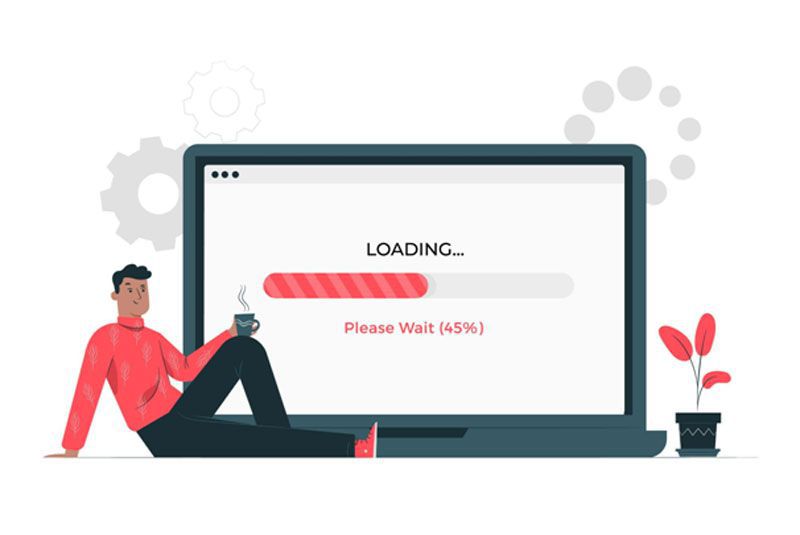Load testing is crucial for high-performance production. Learning how to perform load tests is essential to assess the time required for critical business transactions to ensure they align with expected documentation timelines. Proper load testing involves measuring application capacity in network sensitivity tests.
Load tests simulate extensive business activities to create a more effective testing environment. Project logs can be utilized to generate usage profiles for testing, driving a significant portion of the load test. Daily production load testing is necessary based on the database size, and trying load tests on a projected database is also an option.
As databases grow, load testing should be conducted in proportion to their increasing size. Repeating tests is essential to ensure consistent results and accurate databases. Large-scale deployments may require multiple load tests to safeguard databases from potential risks.
The Main Purpose of Load Test
All load testing should be properly noted and documented. Each load test should basically fit to any of the following:
Number of risk.
You have to determine through a load test if the performance meet the required expectations such as, response in a given time under a specific level of load testing. This is called a quality assurance type test. Remember that a load testing doesn’t lessen the quantity of risk; rather it identifies the quantity of risk present in a certain loading test.
Determine the level of configuration.
Through load testing the timing and level of configuration should be determined to keep the system meet the required level of performance in each stakeholder. Doing this will minimize the cost of hardware and software ownership. This kind of test is called ‘business technology optimization test.
For sure, you, as a company or business owner, may experience certain difficulties in understanding the technical side of load testing. This is not at all an obstacle in implementing tests. In this case, it is common practice to engage an outsourcing testing company. As a partner at the stage of preparation and release of software, the testing company will prepare the necessary documentation, conduct specified types of tests and advise your business at all stages of its life cycle — https://testfort.com/software-qa-consulting.
What kind of functions or business process to test?
Here are some key functions and business processes that are commonly tested via load testing:
1. User Authentication and Authorization:
- Test the system’s ability to handle multiple concurrent user logins.
- Evaluate the performance of user authentication and authorization processes.
2. Transaction Processing:
- To assess the system’s transaction processing capabilities under load, simulate a high volume of transactions.
- During peak transaction times, test the system’s responsiveness.
3. Database Queries and Updates:
- The system’s performance undergoes evaluation for the impact of concurrent database queries and updates.
- Test the database connection efficiency and query response times.
4. Communication Channels:
- Under load, test the real-time communication features–messaging or video conferencing particularly.
- Assess the system’s capacity to manage an extensive volume of concurrent connections.
5. API Endpoints:
- Especially in systems with extensive integrations, test the performance of API endpoints.
- Under varying loads, we must evaluate the response times and reliability of API calls.
Tailoring load testing scenarios to the specific characteristics of the application or system under examination remains crucial. It guarantees identification and addressing of potential bottlenecks, performance issues prior to real-world deployment – a necessary step for optimal functionality.
Example of a configured load test in a web based-system
To be able to understand web based load testing, first you have to grasp why a load runner is important with this kind of activity. A load runner is important so that you can have a better server, either in web application or in data base application.
The internet is connected to the firewall through load generators. What the load generators do is to simulate the user activity in protocol level. The load generator collects all the transactions in a specified time matrix so that you can execute the loading test, it is important to generate it at protocol level. The load balancer is capable of controlling time displayed in a graph and other categories such as utilization of CPU, web sphere, oracle and the fire wall.
When the tests are completed, the engine can basically generate several graphs to locate other performance that could block the loading system.

Simplified Communication and Configuration
Simplifying a load test system involves direct communication to the load generator, which then transmits data to the load balancer. The load balancer contacts the load runner controller on your computer, accurately measuring the computer’s activity. The loading system gathers statistics from various components, streamlining test configuration, while considering limitations imposed by the firewall.
A simplified configuration manages loading generation by analyzing reports to identify potential obstacles. Output includes measurements of response time and speed at various levels. This process detects discrepancies in loading levels at specified times, determining the system’s consistency. Once stability is achieved, the system can simulate multiple users over time without interference. After load testing, the engine assesses performance through dialogues, identifying hindrances.
Reporting Response
The output in a load test includes several responses in a given time at any phase, example if there are about 500 or more users in the server. It is a must that you determine the response given to a certain time and how much load it required to do the test. For example if if users arrive to the server who ramp up in about ten minutes, in those ten minutes you should have at least stabilized the system. If the system is stabilized within that given period of time that means there is a positive and successful loading result; once everything is stabilized all the required tests systems are successfully done.

Namaste UI collaborates closely with clients to develop tailored guest posting strategies that align with their unique goals and target audiences. Their commitment to delivering high-quality, niche-specific content ensures that each guest post not only meets but exceeds the expectations of both clients and the hosting platforms. Connect with us on social media for the latest updates on guest posting trends, outreach strategies, and digital marketing tips. For any types of guest posting services, contact us on info[at]namasteui.com.

